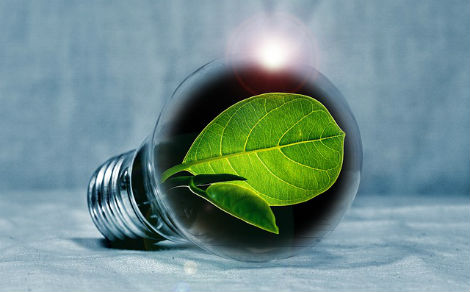According to a report in Quartz, Breakthrough Energy Ventures (BEV), founded by a group of billionaires including Bill Gates, Jeff Bezos, Jack Ma, Mukesh Ambani, and Richard Branson, is looking to invest at least $1 billion in developing new energy technologies that will reduce global greenhouse gas emissions. They recently announced that their first two investments will be in the energy storage startups Form Energy and Quidnet Energy.
The founders of BEV has seen a lot of promising ventures go belly up, and Bill Gates in particular has invested in two energy storage solutions that eventually failed. The first was Aquion Energy, which developed a salt water battery that grew big enough to build a manufacturing unit and sell the batteries, but even with such cheap overhead, they were unable to compete with lithium-ion battery companies, which had more staff and resources to increase manufacturing and lower costs. They raised $190 million dollars but eventually ran out of money, filed for bankruptcy, and were acquired by a Chinese company.
Gates’ second venture was LightSail Energy, which tried to store energy using compressed air, which wasn’t a new technology but also wasn’t widely used due to the fact that compressed air heats up and loses energy. Founder Danielle Fong had ideas to make compressed air be able to store that energy rather than lose it, and racked up $80 million worth of investments, but the company went into “hibernation” earlier this year.
With great ideas failing in such a high-stakes industry, Gates and his team of billionaires are looking to invest in “patient capital.” They aren’t looking for a band-aid solution anymore, but rather a reconstructive surgery that will change the way energy looks to the world. Reducing global greenhouse gas emissions to zero is a possibility, with Iceland and Paraguay already running 100% on renewable energy, but it will take time, patience, and some smart investments.
BEV has put together a group of academics, entrepreneurs, and industry specialists that want to assist underfunded and promising technologies involved in grid-scale energy storage, zero-carbon liquid fuels, micro grids, low-carbon building materials, and geothermal energy. Energy storage is a first priority because can hold excess energy, allowing sun and wind technologies to provide energy on cloudy or windless days.
Pumped hydro is currently the most widely used form of energy storage, but it can be a bit cumbersome. Hydro storage uses excess electricity to pump water to an upper reservoir, where it can be released into a lower reservoir to run turbines when energy is needed. While this technology can store large amounts of energy with emitting any greenhouse gases, it requires enough space for two reservoirs, triggers a loss of biodiversity, and can force the migration of people settled in the area.
Quidnet, in an effort to eliminate some of these cons, is developing a process that uses excess electricity to pump water into the underground shale rock found in abandoned oil-and-gas wells or new wells dug for that particular purpose. Once the tiny cracks in the shale are filled with water, forcing more in will create pressure, compressing the shale like a spring. When energy is needed, the pressure is let off and the water that gushes out is used to run turbines that re-generate electricity.
Quidnet had raised $1.5 million dollars through the Clean Energy Venture Group and Prime Coalition, and BEV’s investment along with money raised through Evok Innovations will provide them with $6.4 million. They have already proven that the technology works through a series of tests done in Texas and Nevada in 2016. They will use their new capital to run more trials and further develop the technology so that they can fulfill CEO Joe Zhou’s promises of being able to provide cheaper hydro energy storage without the negatives of building dams and reservoirs.
BEV’s other investment, Form Energy, is in the battery business. They have $2 million from MIT’s Engine Fund and $9 million from BEV, Prelude Ventures and other small investors to develop a cheap battery capable of storing large amounts of energy for long durations. They have two different ideas for chemistry they can use in the battery, one of which is a “sulfur-flow battery.”
Batteries work by creating electricity as energy-containing electrolytes and electrodes move electrons between the battery’s electrodes—the cathode and anode. The electrolytes in a flow battery are liquid and are pumped in and out of chambers containing electrodes and the separator, which allows the energy to release with predictability. Flow batteries are not necessarily a new innovation, but Form Energy’s use of abundant sulfur inside a battery sure would be.
In October 2017, co-founder Yet-Ming Chiang wrote in the journal Joule that the technology can reach “the lowest chemical cost to our knowledge of any rechargeable battery”: less than $1/kWh. If you factor in the costs of building pumps, pipes, and containers, the battery manufacturing cost could hit the target price of $10/kWh. Lithium-ion batteries are currently the most reliable and powerful on the market, and, though their prices are dropping, are not expected to ever sell for lower than $100/kWh.
If you enjoyed this article and want to receive more valuable industry content like this, click here to sign up for our digital newsletters!










Leave a Reply